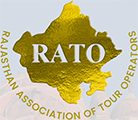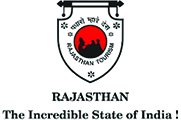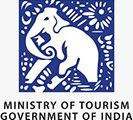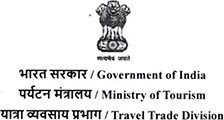Rajasthan Darshan for 10 Nights 11 Days
If you’re dreaming of a colorful escape filled with royal forts, golden deserts, and vibrant culture, then a Rajasthan Darshan for 10 Nights 11 Days is just what you need. The Rajasthan Darshan tour takes you on a magical journey through Jaipur, Udaipur, Chittorgarh, Jodhpur, Jaisalmer, Bikaner, and more. Over 11 days, you’ll explore ancient palaces, enjoy camel rides in the desert, witness traditional folk music, and experience warm Rajasthani hospitality.
Rajasthan Darshan Itinerary for 10 Days
Every city tells a different story, whether it’s the blue streets of Jodhpur or the shimmering lakes of Udaipur. From spiritual temples to majestic forts, this Rajasthan Darshan Plan for 11 Days promises a perfect blend of history, adventure, and culture. Ideal for families, couples, or solo travelers, this tour is your chance to truly feel the soul of Rajasthan. Pack your bags and get ready to create unforgettable memories on this once-in-a-lifetime journey!
Cities You Can Visit with 11 Days Rajasthan Sightseeing Tour
- Jaipur
- Chittorgarh
- Udaipur
- Mount Abu
- Jodhpur
- Jaisalmer
- Bikaner
- Jaipur
Rajasthan Trip for 10 Nights 11 Days
As soon as you arrive at the airport or railway station, our friendly tour representative will be there to greet you with a warm smile and heartfelt welcome. You’ll be assisted with your luggage and guided to your comfortable vehicle. From there, enjoy a smooth and relaxing ride to your hotel. On arrival, we’ll help you with a quick and easy check-in process. Once settled, you can unwind and prepare yourself for the memorable journey that lies ahead.
After breakfast, we will take an excursion to Amber Fort, located about 12 km from Jaipur. It was the ancient capital of the Rajput rulers of Kachhwaha. This unique wonder is a must-see on any Rajasthan tour itinerary. Construction of the fort-palace began in 1592 by Maharaja Man Singh, a Rajput commander in Akbar’s army. It was later expanded by the Jai Singhs before moving their capital to Jaipur.
The fort is a magnificent example of Rajput architecture, with a prime location on a hillside overlooking a lake. You will thoroughly enjoy the ride up to the palace on the back of a brilliantly decorated elephant. We will visit the many chambers and corridors of this palace, famous for their designs and decorations.
In the afternoon, we will take a tour of the city’s most iconic structures. We first visited the Jantar Mantar, a magnificent stone observatory built by Raja Jai Singh in 1728, known for his passion for astronomy. The Jaipur observatory is the largest and best preserved of the five he built; the other four are located in Delhi, Varanasi, Ujjain, and Muthura.
We then visited the opulent City Palace, a former royal residence, built in a blend of Rajasthani and Mughal styles. The palace houses fabulous museums displaying an excellent collection of miniature paintings, traditional costumes, and armory.
Later, we stopped by the fascinating Hawa Mahal (Palace of the Winds), one of Jaipur’s main monuments. Built in 1799, this five-story building is a stunning example of Rajput art. It was originally built so that the ladies of the royal household could observe daily life and the city’s processions.
After breakfast, we will head to Udaipur via Chittorgarh. Chittorgarh is a beautiful city to visit and sightsee. Built by the local Maurya rulers (often confused with the imperial Maurya rulers) in the 7th century AD, Chittorgarh Fort in Rajasthan is one of the largest forts in India. Chittorgarh Fort, known simply as Chittor, sprawls majestically atop a 180-meter-high hill and spreads across 270 hectares, serving as a magnificent example of Rajput folk architecture. Its imposing structure features numerous gateways built by later rulers of the Maurya clan. Formerly the capital of Mewar, Chittorgarh Fort is now located in the city of Chittorgarh. Chittorgarh Fort resonates with stories of heroism and sacrifice, and reflects Rajput culture and values in their truest sense. Due to its magnificent architecture, Chittorgarh Fort was declared a UNESCO World Heritage Site in 2013.
There is a 1-km long road leading to Chittorgarh Fort, and it is quite steep. It is often considered the pride of the state, as numerous historical sacrifices are attributed to it. Chittorgarh Fort is also known as the Water Fort, as it once featured 84 bodies of water, but now only 22 remain. The fort’s two main attractions are the Vijay Stambh and Kirti Stambh towers. Vijay Stambh refers to the Tower of Victory, and Kirti Stambh means Tower of Fame. The towers are illuminated at dusk, making them even more beautiful. In addition to the towers, there are many palaces and temples within the fort, most notably the Meera Temple. Later, continue your journey to Udaipur, check into your hotel, and enjoy a free evening.
After breakfast at the hotel, we will begin the day’s program with a visit to the famous and iconic City Palace, the most visited site in all of Udaipur. It is located on the eastern shore of Lake Pichola.
This truly beautiful and imposing palace is also the largest palace complex in the entire state of Rajasthan. Its construction was begun by Maharaja Udai Singh II, founder of the city of Udaipur (circa 1568 AD).
In reality, it is a conglomeration of buildings (including other smaller palaces and luxurious mansions, added by successive rulers over the next 300 years), which still retains a striking uniformity in its design. The palace is crowned with ornate balconies, towers, and domes, and from the upper terraces, one can enjoy magnificent views of the lake and the city.
The main part of the palace is currently preserved as a museum, housing an impressive collection of mosaics, glass and mirror work, ornamental tiles, rare miniature paintings, fine sculptures, as well as an armory displaying an interesting collection of ancient weapons and battle gear of the brave Rajput warriors.
Another unique and fascinating attraction in this city is the Lake Palace Hotel, located on Jagniwas Island in Lake Pichola. This extraordinary building, of magical construction, seems to literally float in the middle of the lake. It was built by Maharaja Jagat Singh II in 1754 AD and formally served as the Summer Palace for the Royal Family of Udaipur. Later, it was converted into a luxury holiday residence and resort and is now considered one of the most spectacular hotels in the world.
In addition to the aforementioned main attraction, we will also discover two other interesting places:
Saheliyon-ki-Bari, or the “Garden of the Ladies-in-Waiting,” located to the north of the city. This picturesque little ornamental garden features fountains, kiosks, marble elephants, and a charming lotus pond.
The Jagadish Temple, located just 150 meters north of the City Palace, is a magnificent example of the Indo-Aryan architectural style. It was built by Maharaja Jagat Singh in 1651 AD. It enshrines a black stone image of Vishnu, as “Jagannath,” the Lord of the Universe.
Traditional folklore promotes the belief that the illustrious rulers of Mewar descend from what is considered the oldest ruling dynasty in the world, with over 76 generations.
A leisurely stroll around Lake Pichola is planned for the evening to enjoy the charm and enchanting atmosphere of this beautiful city.
After breakfast, we will head to Mount Abu. En route, we will visit the Jain temples of Ranakpur, a complex of exceptional beauty, one of the largest and most important Jain temples in all of India. Located in a remote valley in the Aravalli Mountains, it is definitely worth a visit.
The main temple is the Chaumukha Temple or Temple of the Four Faces, dedicated to Adinath, one of the 24 Thirtankaras, belonging to the lineage of ancient spiritual masters who established Jain philosophy.
Built in 1439 AD, this enormous marble temple, magnificently crafted and well-preserved, has 29 halls supported by 1,444 pillars, each unique in design and execution, and no two pillars are alike! Within the complex are two other Jain temples: the Sun Temple and, a little further away, the Amba Mata Temple. After lunch, head to Mount Abu. Check into your hotel. At dusk, visit Sunset Point on Mount Abu, located near the Nakki Lake area in Rajasthan. This popular attraction offers stunning views of the Aravalli Hills, bathed in golden hues at sunset. It’s easily accessible via a short hike or pony ride, making it a favorite spot for families and couples. The area also features local snack and souvenir vendors, adding a lively atmosphere to the scenic experience.
After breakfast, depart for a sightseeing tour of Mount Abu. The Dilwara Temples, located about 3 km from Mount Abu, were built primarily by Vastupal and Tejpal between the 11th and 13th centuries AD. The Dilwara Temple includes five equally fascinating temples: Vimal Vasahi, Luna Vasahi, Pittalhar, Parshavanatha, and the Mahavir Swami Temple, dedicated to the gods Adinath, Rishabhdeo, Neminath, Mahavir Swami, and Parshvanath, respectively.
Nakki Lake. Located south of Nakki Lake on Mount Abu, Toad Rock is a colossal rock that resembles a toad about to leap into the lake. Known as the mascot of Mount Abu, it is one of the most popular spots for visitors. To admire the panoramic beauty of the surrounding lake and the verdant mountainous regions, you can climb the rock and take in the stunning scenery.
The Arbuda Devi Temple is considered the holiest pilgrimage site on Mount Abu and is a testament to Rajasthan’s rich architectural heritage. Legend has it that the goddess’s “Adhar” fell and was left hanging in the air, hence the temple’s name. Arbuda Devi is considered the incarnation of Katyayani Devi.
After breakfast, we will head to Jodhpur and upon arrival, check into the hotel. Later, we will visit Jodhpur, the second largest city in Rajasthan. Also known as India’s “Blue City,” it was the traditional capital of the Marwar Kingdom, specifically the Jodhpur Kingdom. It was founded by Rao Jodha in 1459.
Jodhpur is located near the geographic center of Rajasthan, making it an ideal base for traveling to other major tourist destinations such as Udaipur, Jaisalmer, Bikaner, and Jaipur.
Mehrangarh Fort, built by architects, covers an area of nearly 800 hectares. This red sandstone building features large carved panels and latticed windows with exquisite designs. (Although the original fort complex was built in the mid-15th century, most of the current structures date from the 17th century.)
The present-day city of Jodhpur is essentially built around Mehrangarh Fort, enclosed by a wall with several gates. This municipality boasts other popular destinations, including numerous smaller fortifications, palaces, and temples, all nestled in the stark landscape of the Thar Desert.
Another very interesting place to discover is the Jaswant Thada, an elegant marble cenotaph built in 1899 by Maharaja Sardar Singh in memory of his father, Maharaja Jaswant Singh II. This cenotaph features carved viewing platforms and a layered garden surrounding a small lake. The areas surrounding this cenotaph also serve as a crematorium for members of the royal family and rulers of Marwar. It also houses a very interesting exhibition gallery of the rulers and maharajas of Jodhpur.
We can also see the iconic Clock Tower, an iconic structure, as it was once the only means of measuring time for local residents. From the top of this tower you can enjoy an impressive panoramic view of the city.
After breakfast, we will visit the immense and imposing Umaid Bhawan Palace. Built in marble and pink sandstone, it is also known as the “Chhittar Palace” due to the local sandstone used. Begun in 1929, it was designed by the President of the Royal Institute of British Architects for Maharaja Umaid Singh and took 15 years to build. It is considered one of the largest private residences in the world and has 347 rooms. Part of this palace remains the main residence of the former royal family of Jodhpur, although much of it has been converted into a luxurious 5-star hotel.
After lunch, we will continue our journey to Jaisalmer, located in the vast desert area of western Rajasthan.
Jaisalmer is a city located in the Indian state of Rajasthan, approximately 575 km west of the capital, Jaipur. It was built in 1156 AD by the Bhatti Rajput ruler, Rawal Jaisal. The city stands on Meru Hill, a mountainous ridge of yellow sandstone, and is crowned by the ancient and magnificent Jaisalmer Fort.
Jaisalmer means “Jaisal Hill Fort.” The fort complex houses the Royal Palace and several splendid and beautifully decorated Jain temples. Many of the houses and temples, both within the fort and in the city below, are built of yellowish sandstone, often with intricate carvings. This enchanting landscape produces a magnificent and magical display of colors, with hues of gold and yellow, constantly playing in the sunlight. For this reason, Jaisalmer is also known as India’s “Golden City.”
The city of Jaisalmer is located in the heart of India’s Great Thar Desert and has a population (including residents of the Fort) of approximately 80,000. It is also the administrative headquarters of Jaisalmer District.
The jewels of Jaisalmer we will visit today are the following three havelis:
The impressive mansions built by Jaisalmer’s wealthy merchants are known as havelis, and several of these finely sculpted sandstone structures are still in very good condition.
Nathmal-ki-Haveli:
This late 19th-century haveli features a very intricate architectural style, executed with superb craftsmanship. The left and right wings of the building were carved by two brothers, and although very similar, they are not identical. The interiors of this splendid mansion are adorned with remarkable and exquisite miniature paintings. It is worth noting that this late 19th-century haveli was also the official residence of the Prime Minister of the former Kingdom of Jaisalmer.
Patwon-ki-Haveli:
This haveli, the most elaborate and magnificent of all Jaisalmer’s havelis, stands on a narrow street. It was originally built between 1800 and 1860 by five Jain brothers who made a fortune trading in jewelry and fine brocade. It features wide hallways with exquisitely carved columns and several well-appointed rooms. One of the apartments in this five-story haveli features beautiful murals.
Salim Singh-ki-Haveli:
This private haveli (the oldest of the three) was built about 300 years ago and part of it is still occupied. Salim Singh was the Prime Minister when Jaisalmer was the capital of a princely state, and his mansion features a beautiful arched roof (in the shape of a blue dome) with magnificently carved corbels in the shape of peacocks.
We will then visit Gadi Sagar, located south of the city walls. This site was originally designed as a reservoir and water body, which used to serve as a source of water supply for the city. Numerous small temples and shrines surround it. A wide variety of waterfowl flock here during the winter months.
In the late afternoon and early evening, we will head to Sam Dunes, located about 45 km west of Jaisalmer.
Here you can enjoy a breathtaking view of the sunset from the top of the sand dunes. You also have the option of taking a camel or jeep ride to reach the sunset point, located not far away.
We have prepared an evening program for you with enchanting music, folk songs, and dances accompanied by delicious traditional food from this region and other culinary delights from Rajasthan.
After breakfast, we will head to Bikaner and check into the hotel. The city of Bikaner was founded by Rao Bika in 1488. He was the firstborn son of Maharaja Rao Jodha (of the Rathore clan), founder of the kingdom of Jodhpur.
Not wanting to inherit anything from his father or acquire any royal titles, he decided to found his own kingdom in the vast and arid regions of Jangladesh, northern Rajasthan. The founder’s name, “Bika,” is found in the word “Bikaner,” which means “Bika’s Settlement.” Although located in the heart of the Thar Desert, Bikaner survived as an important stop on the ancient trade route between the Gujarat coast and Central Asia, thanks to its abundant water sources.
The most important places to discover today in this city are, of course, the impressive Bikaner Fort, Junagarh Fort (located on the outskirts of the city), and Lalgarh Palace. Bikaner is also a good starting point for visiting the nearby and world-famous Karni Mata Temple, where thousands of sacred rats are worshipped.
We begin the day’s excursion by first visiting Junagarh Fort, also known as the “Impregnable Fort” for its exceptional condition of not having been captured by any enemy force throughout its history. It was built between 1588 and 1593 by Raja Rai Singh, a general in the Mughal Emperor Akbar’s army.
It is surrounded by moats on all sides, and inside, you can admire numerous palaces, pavilions, and temples of extraordinary beauty. Most of these buildings are constructed of marble or red sandstone and display intricate carvings on the walls, windows, and balconies.
Lalgarh Palace was built by Maharaja Ganga Singh (1881–1942). The architectural style of this palace reflects great craftsmanship, with figures skillfully carved in red stone. It also houses a wonderful collection of hunting trophies and old photographs, all well preserved and interestingly displayed.
After breakfast, we will head to Jaipur. At the end of the tour, we will head to the Jaipur airport/railway station for your flight home.
We deeply appreciate your use of our services and hope you were satisfied with our commitment to providing the best service and care to our distinguished guests. We believe this visit was a wonderful experience, and we are sure you will have unforgettable memories.
Need Help ?? Contact us..!!
Mail Us
info@rajasthantourismbureau.com
Call Us
+91-9928026027 / +91-141-6783026
For details or any other query please contact below :
How It Works
- Choose from our curated tour packages designed around diverse interests and destinations, or create a custom travel itinerary for a journey that's uniquely yours.
- Once we receive your email, you can expect a prompt response within 24 hours, complete with a detailed itinerary tailored to your preferences and needs.
- Enjoy the convenience of secure online payment, or choose to pay upon arrival—whichever option best fits your preferences and travel plans.
- 5000+ Completed Tours with happy Clients
- 25+ Years of experience
- Globally Recognized As best Tour Operator





